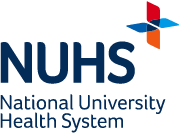Diagnosis typically follows a detailed history assessment and physical examination. If deemed clinically necessary, the doctor may order neuroimaging tests, such as computerised tomography (CT) scans or magnetic resonancei (MRI).
Primary Headaches
Treatment principles for primary headaches involves using analgesics as needed and minimising triggers such as psychological stress, sleep deprivation and prolonged screen time.
Analgesics, or painkillers, such as paracetamol and non-steroidal anti-inflammatory drugs can be administered for acute severe headaches (tension-type headaches and migraines). However, to avoid the risk of medication-overuse headaches, restrict their use to no more than twice per week.
Prophylactic therapy, a preventive treatment, is advised when migraines are frequent or severely impact on your child's life. A doctor will discuss the potential benefits and side effects of these medications before commencing treatment.
Treating chronic headaches requires a holistic, multi-month approach aiming at restoring normal activities of the child, including
- Administering headache medication strictly as prescribed.
- Identifying and avoiding headache triggers and addressing stressors, such as exams and menstrual cycles, mood or anxiety issues. Counselling or psychotherapy sessions may be beneficial.
- Ensuring regular sleep patterns, with eight to 10 hours of uninterrupted nightly.
- Providing regular and nutritious meals, avoiding MSG and ensuring hydration to prevent dehydration-related headaches.
- Avoiding caffeine and alcohol, as they can trigger headaches.
- Encouraging exercising to increase blood flow and endorphin levels, which helps to reduce stress and maintain physical fitness.
- Maintaining a headache diary to monitor progress.
- Allowing time for relaxation and hobbies.
- Setting realistic expectation, as frequency and severity of headaches may decrease over weeks to months, but they may not disappear completely.
Secondary Headaches
Treatment for secondary headaches depends on the underlying cause.

















